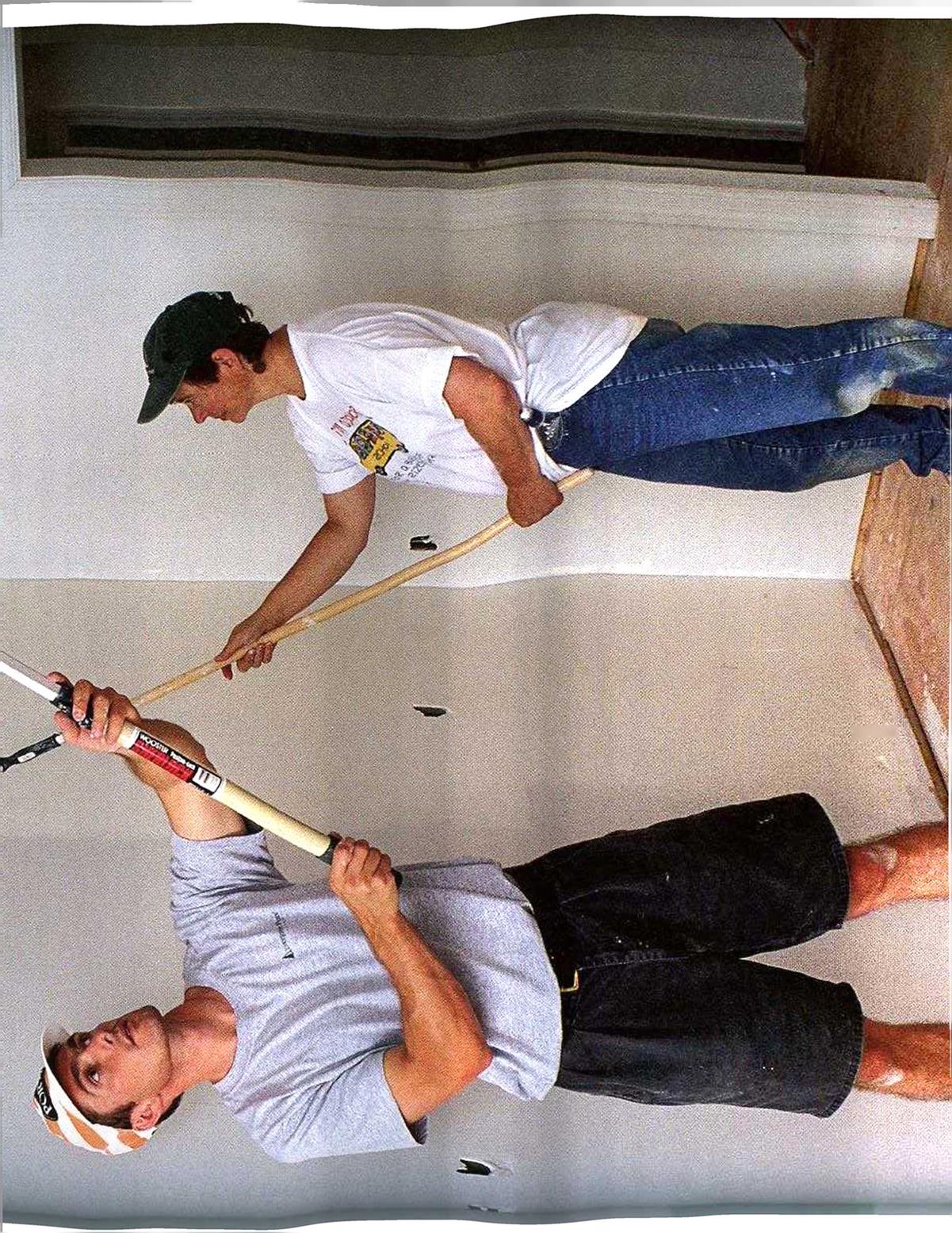Dry wall and Painting
I’M NOT SURE WHEN DRYWALL—also known as gypsum board, wallboard, and Sheetrock®— was first used in construction. I have seen drywall on pre-WWII houses, but we definitely didn’t have drywall in my old prairie home. It wasn’t until the late ’50s in California, where I was working, that drywall became the preferred wall covering in residential housing. “Knock on the Wall! Demand Genuine Lath and Plaster!” was the rallying cry of the once-mighty plaster industry, as they struggled against the newcomer—drywall.
Big plaster fought a losing battle. It took two or three weeks to cover walls with layers of plaster, and the process left the house frame waterlogged. In the winter, it could take a month or more for a house to dry out well. Cabinets installed after plastering often had sticky drawers. In addition, passage doors were hard to open, and hardwood floors expanded and buckled. It’s no wonder the construction industry switched to drywall. It allowed builders to complete houses in record time.
Drywall installation can begin once you’ve passed all your inspections—electrical, plumbing, heating, framing, insulation, and vapor barrier. Drywall is not difficult to secure to ceilings and walls, but it takes more skill to leave the finished walls straight
|
Q. |
1 |
Get Ready to Install Drywall |
5 |
Mud, Tape, and Finish the Drywall |
|
0 |
2 |
Install the Ceiling Panels |
6 |
Paint the Ceilings and Walls |
|
ca |
3 |
Install the Wall Panels |
7 |
Prepare and Paint the Interior Trim |
|
С/Э |
4 |
Install the Corner Bead |
8 Paint the Exterior Siding and Trim |
|
|
|
|
|
|




and smooth. This chapter will tell you how to order and store drywall, which tools and methods you need to cut and “hang” it, how to tape and finish the joints, and how to paint the walls and trim. By the time you’re done with these jobs, your house will look a lot more like a home.
STEP 1 Get Ready to Install Drywall
There’s some important prep work to be done before you take delivery of your drywall order and before any installation work can begin. In addition to following the advice explained below, see the sidebars below and on p. 216 for information on sizes and types of drywall and how to order and store the material.
Make sure the studs and joists are dry
Framing lumber used today often arrives at the job site with a high moisture content. Over time, it will shrink—sometimes quite a lot. When the studs and joists shrink after the drywall has been installed, the fasteners can work loose. A loose nail or screw can create a noticeable and unsightly bump, or nail pop, in the drywall surface.
To reduce the chances that nail pops will mar your drywall work, you may need to close in the house and turn on the heat for a couple of weeks. Leave a couple of windows cracked open to allow moist air to escape as the wood dries. You can ignore this advice if you’re working with dry wood or if you’ve had the good fortune to frame your house in clear,







Leave a reply